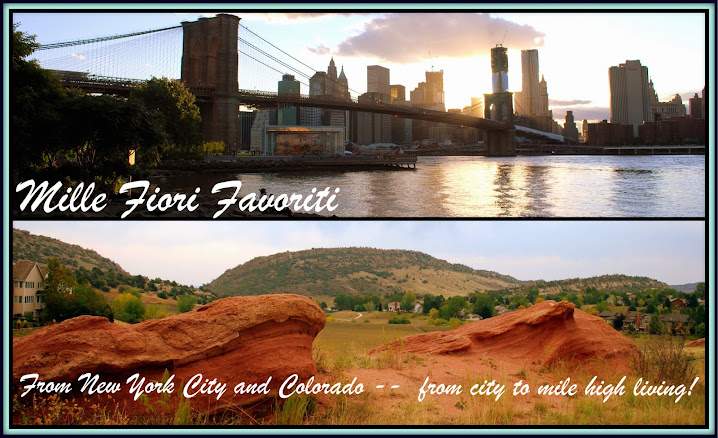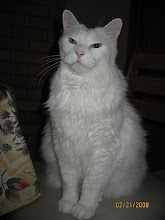Whenever my husband and I visit New York City we spend most of our time in our favorite borough - Brooklyn, where I was born, raised and lived for most of my life, and where my husband immigrated from Italy as a child. We have family and friends that still live there and it's always so wonderful to see everyone again. Brooklyn has always been the borough of immigrants--the beginning of many people who came to the USA from all around the world. Both of my parents were born and raised in coal country in Pennsylvania, and both of my grandfathers were coal miners, but my parents met in Brooklyn during the years around WWII, when my mother and father lived and worked in Brooklyn, as jobs were more plentiful in New York City at that time. Brooklyn has now also become a beacon for many young professionals from across the country who want to live and work in New York City, but found Manhattan too expensive. They have actually made the prices for rent in Brooklyn become almost as high as those in Manhattan in many neighborhoods, but the renaissance of Brooklyn becoming a very desirable place to live and work has brought many new opportunities to the borough.
One example of a changing Brooklyn is the Brooklyn Navy Yard. In all the years I lived in Brooklyn, I had never visited the Brooklyn Navy Yard or area, and I was curious to see how it has changed with the times, as I had heard it has reinvented itself.
(All photos in this post will enlarge for easier viewing if clicked on)
The Brooklyn Navy Yard opened in 1806. The area produced merchant ships from the time of the American Revolution, but the land was purchased by the federal government in 1901 and became a US Navy shipyard five years later. By the American Civil War the yard has expanded to employ about 6,000 men, and at its peak, during World War II the yard employed 70,000 people, 24 hours a day. Ships such as the first ironclad ship, the Monitor, was built. Maine was built in 1890, the battleship North Carolina in 1937, the 1942 battleship Iowa and Missouri, were also built here. America's first angled-deck aircraft carrier the Antietam was built in 1952. The Navy decommissioned the yard in 1966, after the completion of the USS Duluth, and the yard was eventually sold to the City of New York.
In 1967, Seatrain Shipbuilding, owned by Seatrain Lines, signed a lease as a nonprofit body to run the yard for the city but closed its production in 1979. By 1987 the Brooklyn Navy Yard Development Corporation failed in all attempts to lease any of the six dry docks and buildings to any shipbuilding or ship repair company. Without a future in shipbuilding, the Brooklyn Navy Yard now focused on using its space to become an area of private manufacturing and commercial industry.
As my friends and I entered through the security at the gatehouses of the Yard we began by walking around to see how redevelopment was slowly taking place. $700 million in new development is underway, and employment in the Yard is planned to more than double in the next few years, from 7,000 to 20,000 jobs by 2020. As you can see by my photos in the collage above, the Yard is now a mix of old and new buildings with many more new uses in development planned/
My friend suggested that we visit the 117-year-old former Brooklyn Navy Yard Paymaster building, where now the Kings County Distillery has been located since 2012. They produce moonshine, bourbon and other whiskeys, using New York State grain and traditional distilling equipment to make their distinctive spirits. Their whiskeys have won numerous awards from the American Distilling Institute, the Craft Spirits Association, and the San Francisco World Spirits Competition.
They are proud to be located just steps away from where the legendary 1860 Brooklyn Whiskey Wars took place and the former distillery district of the waterfront. Their walls had interesting information about that era. The Smithsonian Magazine has an interesting article about the Whiskey Wars on this link (click through the advertisement on the arrow upper right on the Smithsonian link)
Information on how the laws changed to allow for the distilling of whiskey again in New York--click on the photo to enlarge it to read. We enjoyed sampling some of the different whiskeys that the Kings County Distillery produced, and we also enjoyed speaking with the friendly staff on our tour.
The Kings County Distillery conducts tours Tuesday through Sunday at 3:00 PM and 5:00 PM and on Saturday every half hour from 1:00 PM to 4:00 PM with the last tour ending at 4:00 PM. For more information about the tours and admission price click here.
Next, we visited Rooftop Reds, in the Yard, wherein the spring of 2015, they introduced the world's first commercially viable urban rooftop vineyard in New York City. With the help of the upstate New York Finger Lakes industry and Cornell University, they developed a planter system to grow grapevines that fill their 14,800 square foot rooftop, to one day produce a sustainable and completely Brooklyn vintage of wine. As they wait for their vines to mature they offer events such as rooftop happy hours, pop up dining, and educational viticulture tours and rental opportunities. Until the first rooftop harvest, they are serving wines produced in the Finger Lake region in their bar area.
Since we indulged in samples of whiskey earlier, we did not imbibe any of the wine at Rooftop Red, but we enjoyed their views and the exercise we had walking up the four flights of stairs to visit this rooftop dream in the making.
In fact, one of the views we had from this part of the Navy Yard was a juxtaposition of the old Civil War era "Admirals Row" buildings being torn down in the Brooklyn Navy Yard with the backdrop of expensive new condominium buildings in downtown Brooklyn that have been popping up in the skyline.
Happily, one of the vintage handmade brick buildings that have been preserved is Building 92--the former United States Marine Commandants' Residence, and built-in 1858 by Thomas Ustick Walter, who is considered one of America's most important 19th-century architects. Building 92 is now a museum that tells the story of the "Brooklyn Navy Yard: Past, Present, and Future." It introduces the generations of people who worked or were stationed at the Yard and those who lived in the communities surrounding it. They shaped the Yard over time, and are now are creating its future.
We also saw a part of Steiner Studio in the Brooklyn Navy Yard. It is the largest film and TV studio outside of Hollywood. Opened in 2004 on a 15-acre site containing 580,000 square feet of studio space.
Besides assorted movies and television shows being filmed there, commercials, photos shoots, music videos, Broadway rehearsals, and other events use the studios.
You may recognize this building in the Brooklyn Navy Yard as the place where one of the 2016 Democratic debates between Hilary Clinton and Bernie Sanders took place at the Duggal Greenhouse. It has the capacity to hold 3,000 people in its 35,000 square foot venue space.
As we walked around we came upon a placard for an event happening that evening called "Fly By Night" by Duke Riley and hosted by Creativetime in the Yard. My friends heard about this event, especially through a Wall Street Journal article, and thought that perhaps we could see if we could get a standby pass to see it.
Fortunately, we were able to get standby tickets to the free event. As we waited, "crowd watching" was almost as entertaining as the event itself, as we saw some famous people in attendance.
As soon as the blue hour arrived, after sunset, Duke Riley and his assistants whistled and gently swirled flags overhead, while the pigeons took flight and swooped and fluttered in the air like glittering, twirling diamonds. It was a peaceful and magical sight to see. If you would like to see a short video I took of the pigeon flying overheard go to this link on my Mille Fiori Favoriti facebook page. I'd be pleased if you follow my facebook page as well as following me on Instagram, and on Pinterest.
We did not have the opportunity to visit the Brooklyn Grange Farms in the Brooklyn Navy Yard, that operates a 65,000 square foot commercial space on top of building 3, as well as the many other hundreds of tenants in the Yard that allowed visitors. We did enjoy the new developments we did tour and look forward to seeing more in the future, such as the Mast Brothers large chocolate factory and headquarters that will soon be located in the Yard. The coffee company Brooklyn Roasting and Russ and Daughters, who are a century-old purveyor of pickles, bagels, smoked fish and babka, and the first Wegmans Grocery Store in New York, will also be opening in the next year or so. It is all good news for Brooklyn and I'm happy to see my old hometown thriving so well!
If you want to visit the Brooklyn Navy Yard click here for further information.





























